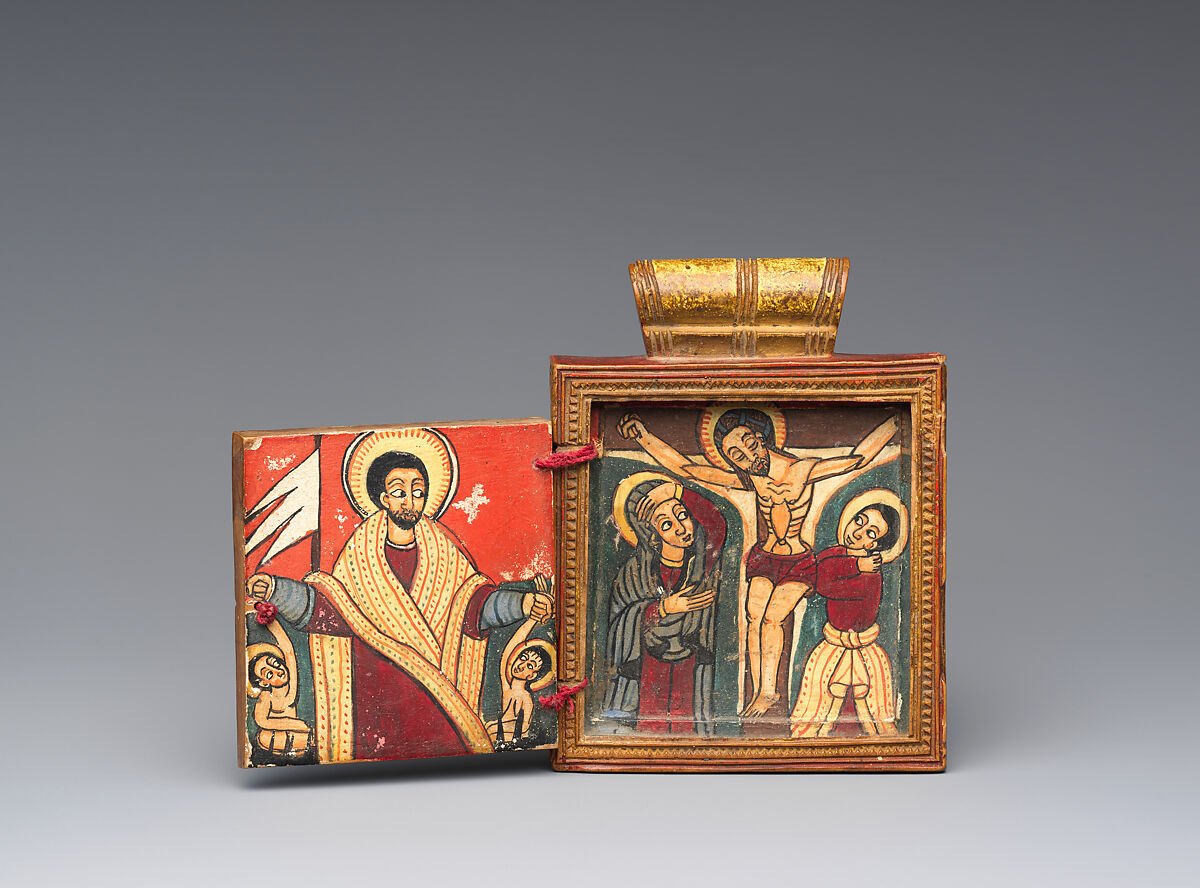
Double Diptych Icon Pendant
Early 18th century
All images and Information taken from The MET - Visit Page for more information
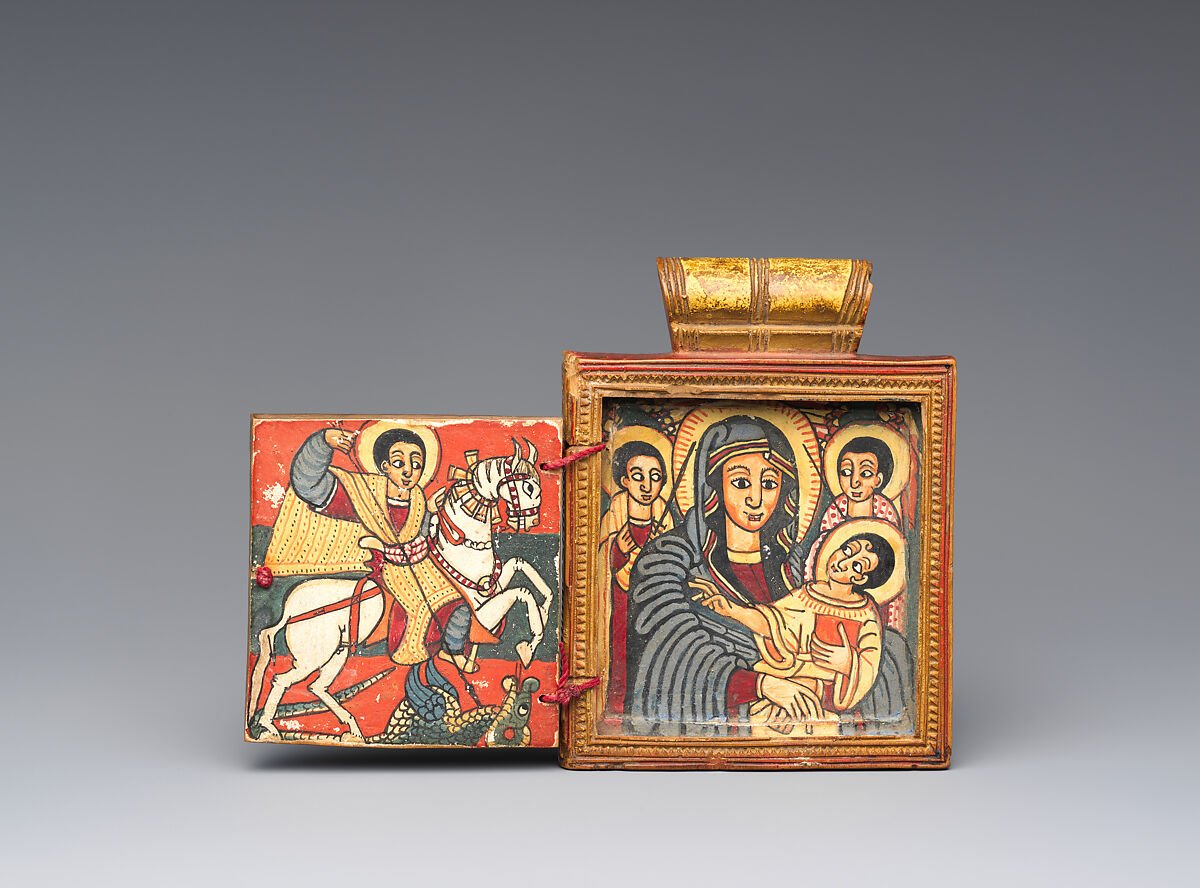

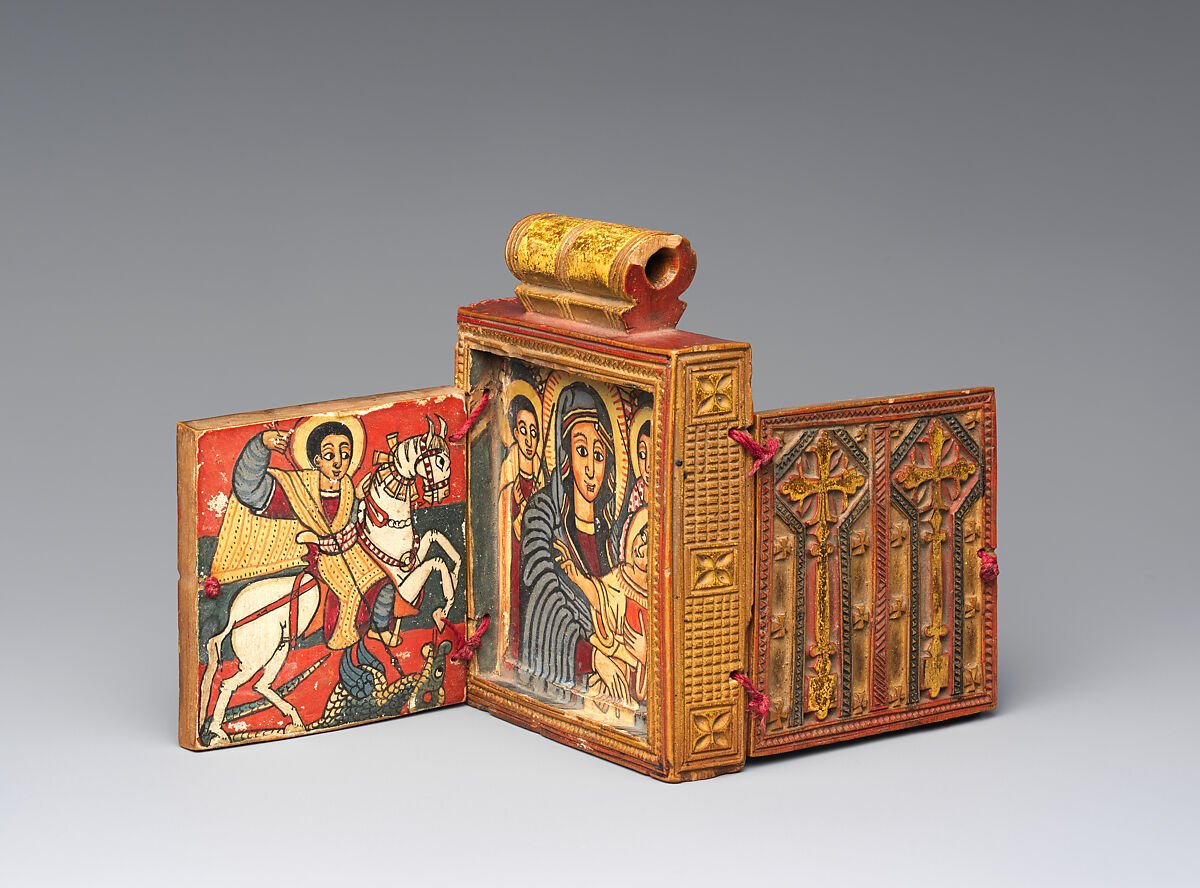
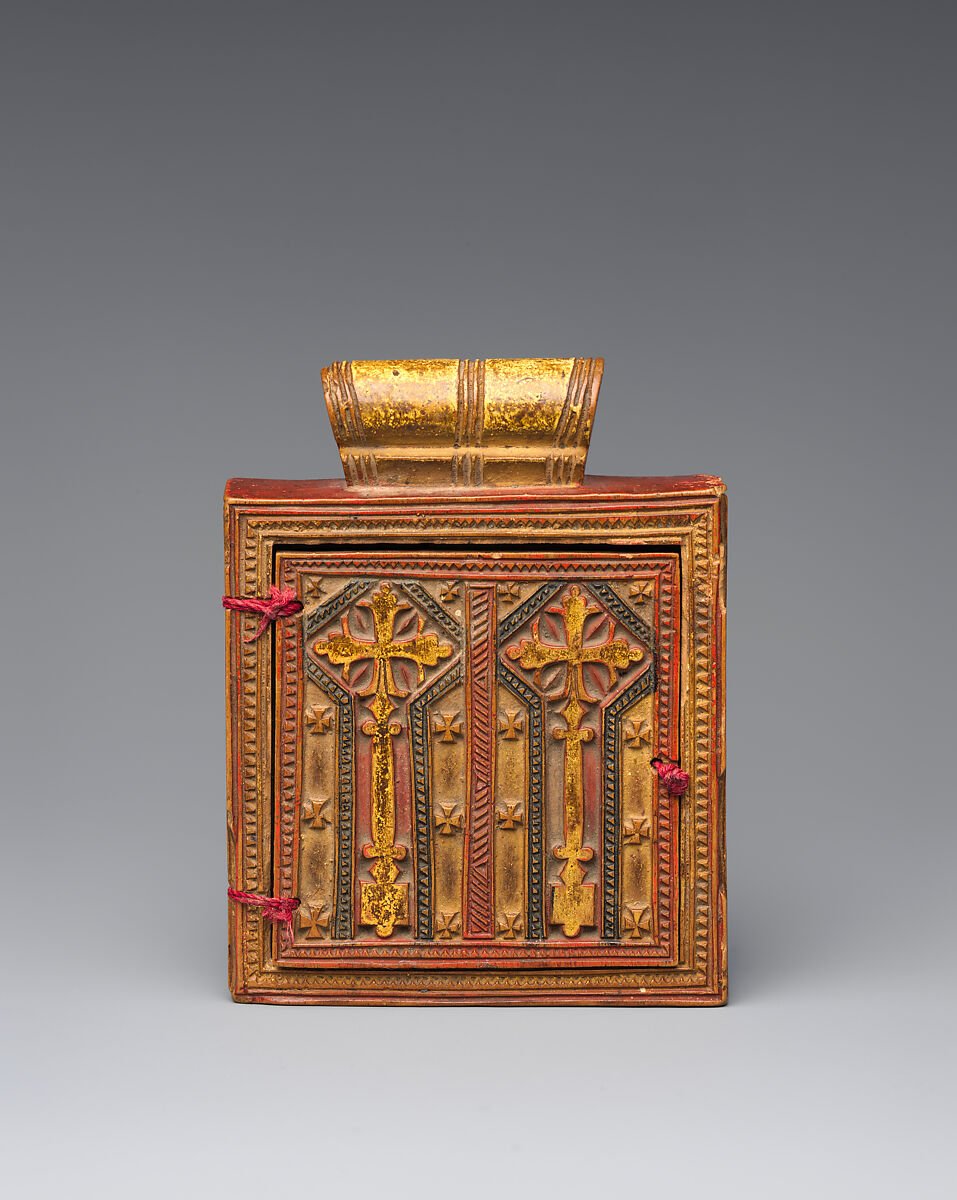
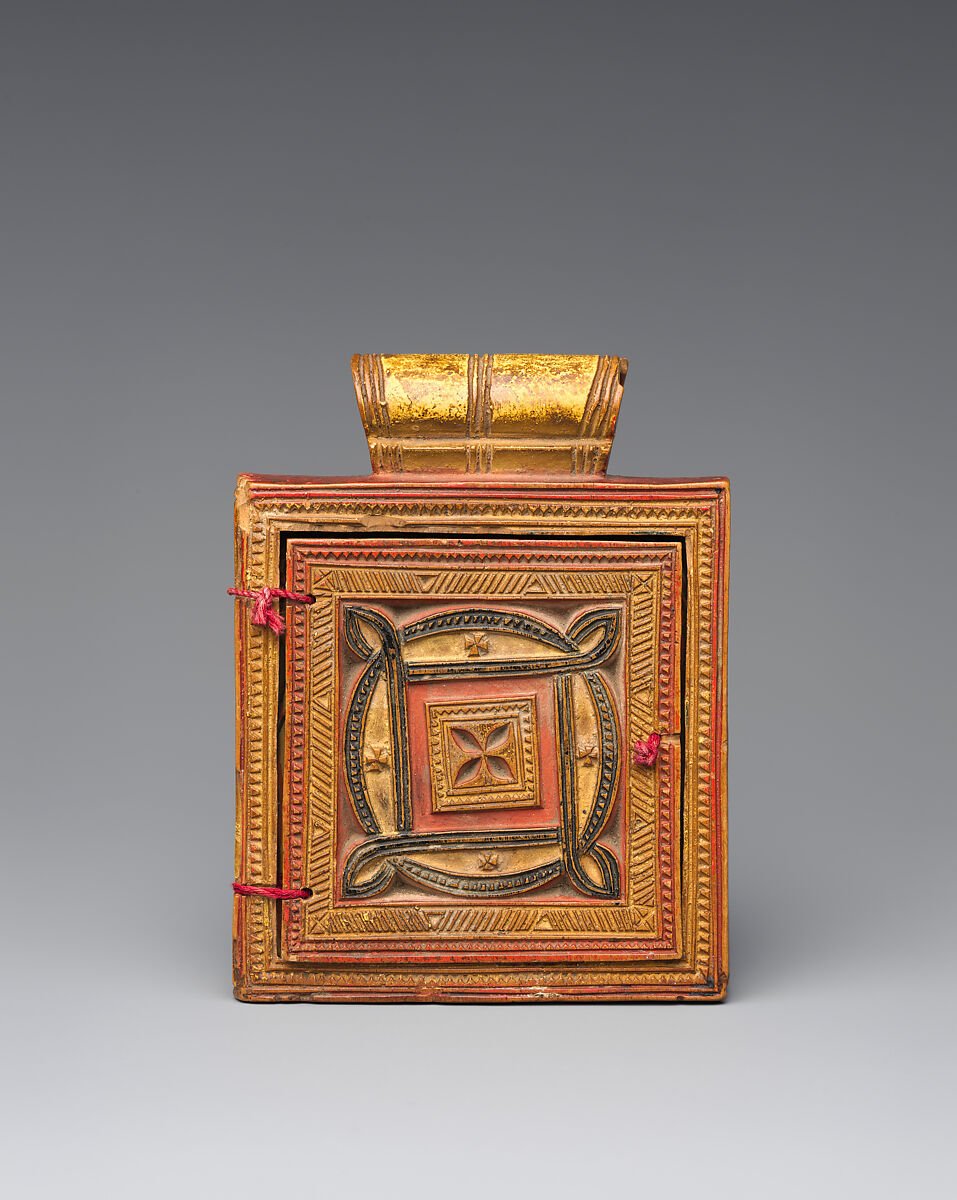

Description
In the seventeenth century, Ethiopian artists were increasingly exposed to forms of expression from Europe. During this period, double-sided diptychs became popular among the nobility as pendant icons were worn suspended by a cord around the neck. The subject matter depicted in this example is a standard program for this genre of personal icon, as are the intricately carved cruciform designs that enhance the exterior surfaces of the protective covers.
This icon is a classic example of the painting style developed during the late seventeenth century at Gondar, the trading center where King Fasiladas (r. 1632–67) established his capital. Portrayed frontally with slightly turned heads and simple, iconic gestures, the figures are superimposed upon neutral backgrounds. Bodies are delineated with thick black outlines, while faces are composed of flat areas of pink and orange. Curving lines and attenuated arcs are employed to evoke the folds of draped robes and mantles.
Read more on The MET
Object Details
Title: Double Diptych Icon Pendant
Date: early 18th century
Geography: Ethiopia, Central and Northern Highlands
Culture: Amhara or Tigrinya peoples
Medium: Wood, tempera pigment, string
Dimensions: Open, mounted: H. 3 3/4 × W. 6 × D. 5 1/2 in. (9.5 × 15.2 × 14 cm)
Classification: Wood-Paintings
Credit Line: Rogers Fund, 1997
Accession Number: 1997.81.1
References
Heldman, Marilyn. African Zion: The Sacred Art of Ethiopia. New Haven: Yale University Press, 1993.
Chojnacki, Stanislaw, and Carolyn Gossage. Ethiopian Icons: Catalogue of the Collection of the Institute of Ethiopian Studies Addis Ababa University. Milan: Skira, 2000.
Simovic, Milos. "Art of Christian Ethiopia." Tribal Art vol. XII, no. 47 (Winter 2007–2008).
